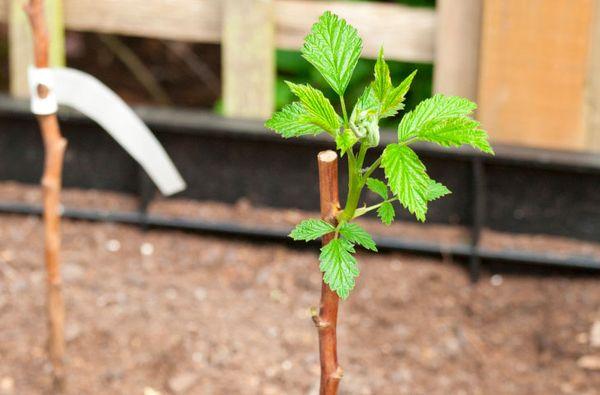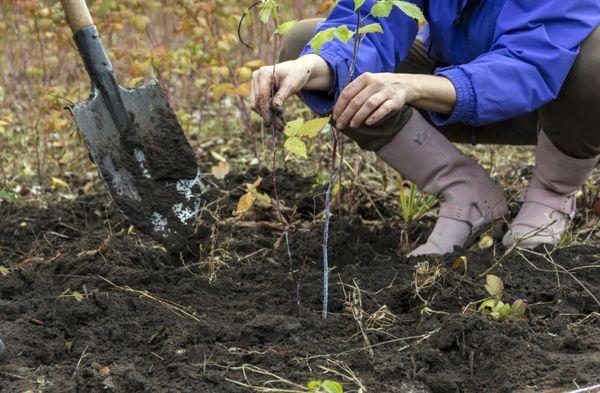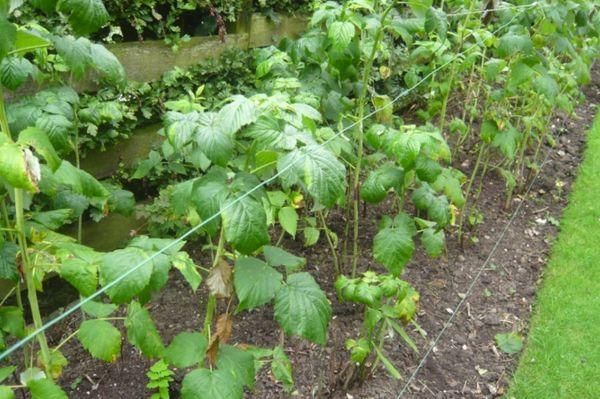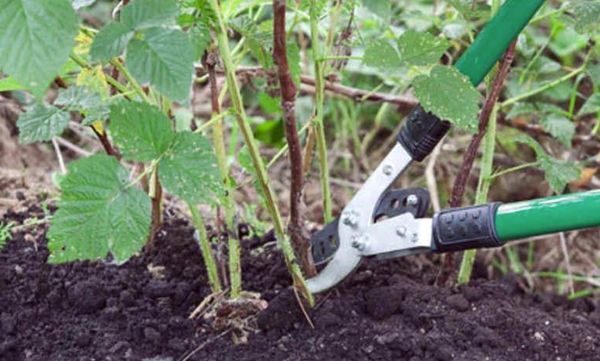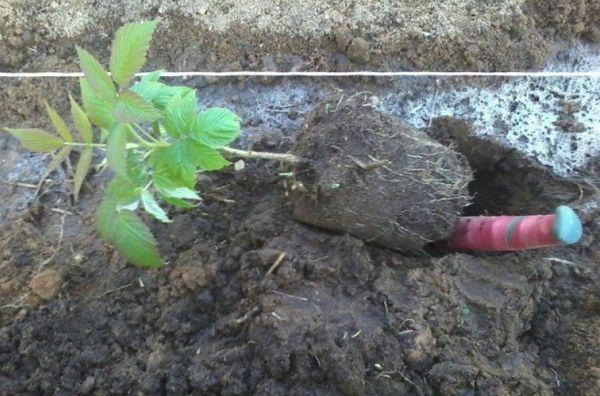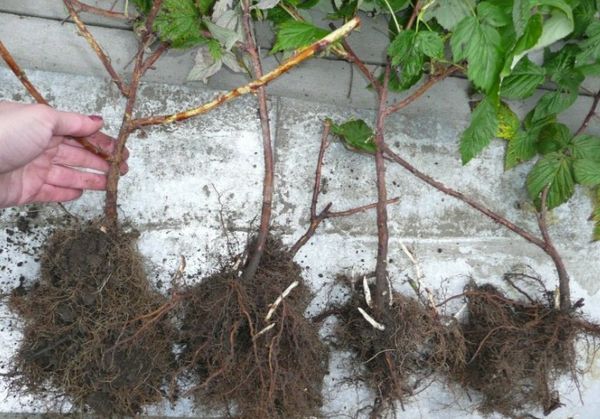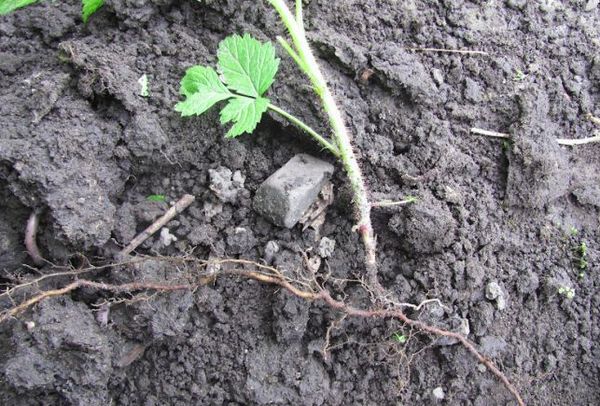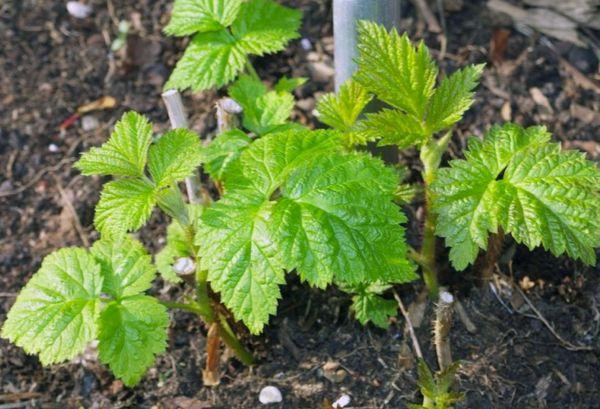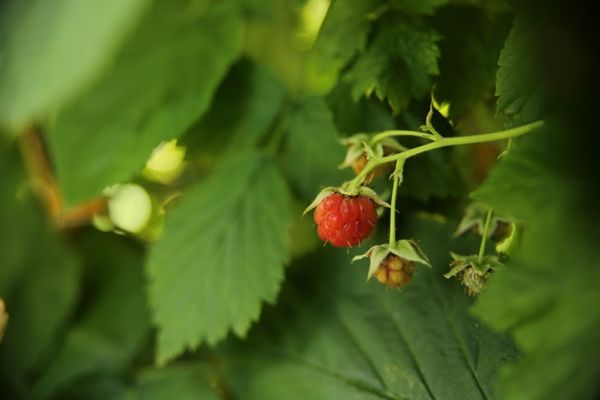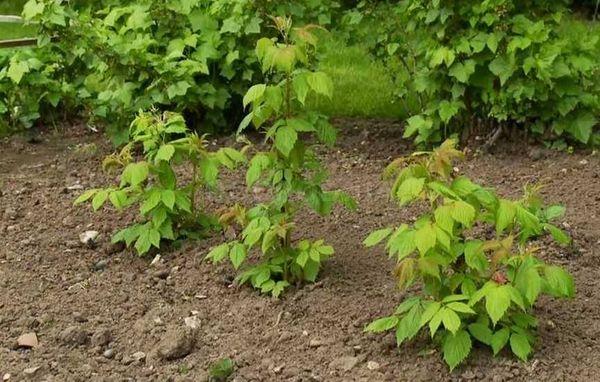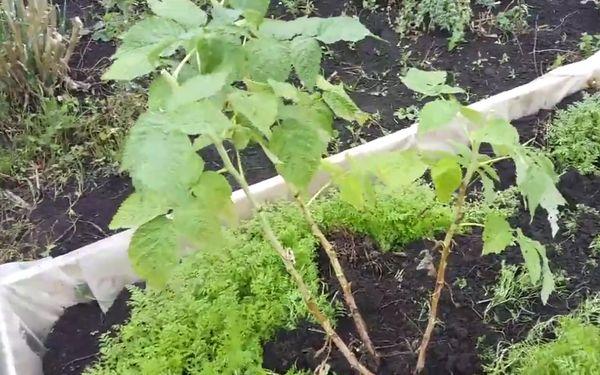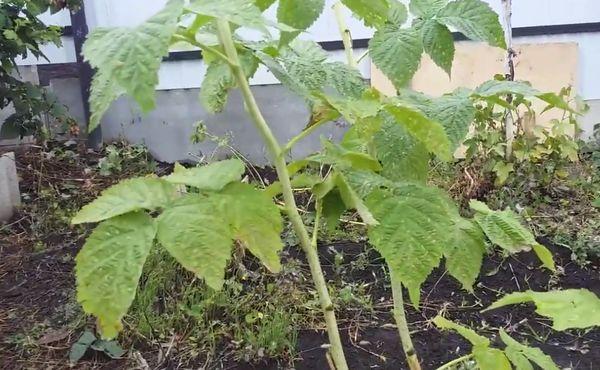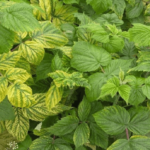A deciduous shrub from the genus Rubus takes root in forests, where it forms dense thickets; it is planted in dachas and suburban areas for its berries, rich in vitamins and organic acids. In the first years of the season, 5–6 kg of fruit are harvested from one raspberry bush, but then the berries become smaller and the yield drops. Powerful roots grow quickly, and time must not be missed to rejuvenate the crop. Many summer residents are sure that the optimal period for replanting raspberries is summer, since the plants will have time to strengthen before the cold weather arrives. The exact date of the procedure is affected by climate conditions.
- Why and why a transplant is needed
- How to understand that it’s time to transplant raspberries to another place
- How often does it need to be replanted?
- After which you can and cannot plant: crop rotation rules
- Timing for transplanting raspberries (table)
- in spring
- in autumn
- In summer
- Preparatory procedures
- Selection and preparation of a place for transplantation
- Planting holes and trenches: dimensions
- Setting the stage
- Selection and preparation of planting material
- Raspberry size for transplanting
- Pruning before transplanting
- Methods and technological sequence of transplantation
- Important points
- Transplanting blooming raspberries
- Fruiting raspberries
- Transplanting an old adult bush and dividing it
- Transplanting root shoots or suckers
- Replanting remontant raspberries
- Proper care of transplanted raspberries
Why and why a transplant is needed
Not all summer residents are in a hurry to look for a new area for shrubs, since fruits, currants, gooseberries, and vegetables are grown on a small area. However, raspberries need to be replanted after 5 years, because:
- The taste and size of the berries deteriorate.
- The soil under the bushes is depleted.
- Pathogenic microorganisms that cause diseases are activated.
- The number of young shoots decreases.
When the plantings become denser, fruiting stops, the cultivated plant turns into unkempt green bushes on which the ovary does not set. The thickets harbor pests that spread throughout the area.
How to understand that it’s time to transplant raspberries to another place
In older plants, productivity decreases. If the berries begin to become smaller, young shoots are not formed, the bush grows in the same area for many years, you need to look for a new place for the raspberry plant.
How often does it need to be replanted?
Berry bushes greatly deplete the soil. The amount of nutrients needed for plant development in the soil decreases. There are fewer fruits on the branches, the taste of the berries deteriorates, and the aroma disappears.
It is advisable to change the area for raspberries once every 5 years, but if the signs of aging in the bush are invisible, a good harvest will ripen, the period can be slightly extended. However, even with proper care, growing shrubs in one area should not last longer than 10 years.
After which you can and cannot plant: crop rotation rules
Raspberries are comfortable along a fence or building, where the wind blows less, but the rays of the sun get in. Bad predecessors for shrubs are potatoes, peppers, and eggplants. Raspberries feel good in the place where they grew:
- legumes;
- calendula and onion;
- garlic and parsley;
- cabbage and cucumbers.
Lupine repels pests; insects do not tolerate the smell of marigolds. You cannot select a place for a berry bush where it was previously grown, or in the vicinity of black currants or gooseberries.
Timing for transplanting raspberries (table)
Some summer residents are sure that work on preparing the site for placing young bushes should begin immediately after the snow melts, others believe that it is better to do this in the fall.
in spring
Beginner gardeners often wonder when to transplant raspberries to a new place if they did not have time to complete the procedure after picking the berries. In the southern regions, such work often begins as early as March. If spring is late, which is not uncommon for mid-latitudes, you should wait until the ground warms up and frosts on the ground stop.
in autumn
It is recommended to transplant raspberries to another place in September, when the harvest has already been harvested and the shoots have had time to grow. The stems are shortened by 15 centimeters and tied to a support. A few days later, the ground around the seedling is covered with straw and peat.
If there are not enough shoots, cut cuttings up to 20 cm long, store the blanks in the basement in wet sand and move them into the ground not in the autumn, but when the next spring comes.
It is better to replant raspberries by adhering to the schedule developed by experts:
| Region | Month |
| Moscow region | April, August, September |
| Northern regions | May, 3rd ten days of August |
| South | March, from 15.09 to 15.10 |
If leaves have blossomed on the bush, flowers or berries have appeared, the plant is not sent to a new place; it will not be able to take root.
In summer
The shrub is replanted in August or even July, if necessary. The area needs to be carefully dug up or loosened well, watered and fed with herbal infusion. The procedure should be performed on a summer morning or late in the evening, when the heat has subsided.
Not everyone understands when to replant remontant raspberries, because their berries are harvested twice a season - in June and August. Work is carried out at any time of the year - spring, autumn, or you can wait until the end of summer.
Preparatory procedures
The shrub grows well on loose soils, prefers loams, feels normal on sandy soils, but then the bushes will have to be watered often. Regardless of when to replant raspberries, in the fall or in the summer, you need to decide on the location in advance. In the first year, you need to find out the composition of the soil; if it is acidic, add lime. Next spring it is advisable to sow zucchini or cucumbers.
Selection and preparation of a place for transplantation
The area for raspberries is dug up to a depth of at least 10 cm, and the remains of the plants are pulled out by the roots. The ground is leveled and the following is applied:
- rotted manure;
- superphosphate;
- ash;
- potassium fertilizer.
Sand is added to peat soil.
You should not choose a place for raspberries where the water comes close to the surface.
Planting holes and trenches: dimensions
If the bush has an open root, it is not recommended to use manure that has already been rotted, otherwise it can cause a burn.Raspberries are planted in the prepared area using one of the methods - strip or bush.
Holes with a diameter of 30 cm are dug to the same depth every 0.5 m. Between the rows leave from one and a half to two meters. The seedlings are sent to the pit, having treated the root with mullein solution.
A trench is dug to the same depth and width of 40 cm, an interval of 50 to 70 cm is made between the rows. 3 or 4 bushes are placed per 2 m.
Setting the stage
Sawdust is poured into the bottom of the pit, and the remains of trees are thrown in so that they rot and turn into fertilizer. Before transplanting, add humus and ash. The top layer of soil is removed, and then the hole is covered with the same soil.
Selection and preparation of planting material
It is recommended to update the raspberry tree gradually and in parts. To do this, take the strongest shoots with a diameter of up to 10 mm with developed roots. Immediately before the procedure, they are shortened and placed in prepared holes and trenches.
Raspberry size for transplanting
In order for the plant to quickly take root and begin to develop, young shoots with a stem height of up to 15 cm are dug up from bushes that bear fruit well. These shoots are rooted in a temporary bed or separated from the parent bushes in the fall and, if they grow to 0.7 m, they are immediately sent to a permanent place.
Pruning before transplanting
Annual raspberry shoots are shortened to 20–25 cm from the base and placed, depending on the method chosen, in holes or trenches. Excess young growth is cut out.
Methods and technological sequence of transplantation
In order for the bush to take root, only healthy shoots are used, the area is prepared in advance, trenches or holes are dug. For spring or summer planting, the same technology is used:
- with the tape method, raspberries are placed in 2-3 lines every 60 cm with an indentation of 1.7 m;
- with the bush method, single shoots are planted at the same distance from each other;
- with the row method, an interval of 50 cm is left between plants, and 2 meters between plantings.
After the procedure, the ground under the raspberries is covered with straw or mulched with peat, due to which moisture is retained and weeds do not grow.
Important points
Replanting shoots in compliance with technology promotes rooting. When propagating raspberries, you need to take into account that in low-lying areas they may die, since they do not tolerate stagnant moisture.
Berry bushes are irrigated 3 or 4 times a month, no more than 4 buckets of water are added per plant. During drought, raspberries are watered more often.
Having cut off the top, the shoots are placed from north to south, protected from the wind by a fence or picket fence.
Transplanting blooming raspberries
When buds appear on the branches of a berry bush, which happens in early June, the plant must be fed. At this time, the heat is already setting in, and the shoots will not take root. To replant raspberries, which can be done in the fall or early spring, a large amount of fertilizer is added to the soil.
The 2 m long shoots are moved to a new location when their diameter reaches 10 mm.
Fruiting raspberries
When the soil is depleted and waterlogged, pathogenic microorganisms and pests accumulate in it, as well as when the berries are crushed, it is necessary to move the most powerful annual bushes that have already bear fruit to a new area.
The following instructions will help you learn how to correctly perform the step-by-step transplant process:
- Prepare and fertilize the soil.
- Make holes or trenches.
- Dig up the raspberries from all sides, holding the shovel vertically.
- The bush is removed along with the soil.
- Divide into several parts using a garden knife.
- Each plant straightens its roots.
- Place the bush in a hole, deepening the neck by 20 or 30 mm.
- Soil is poured on top and immediately compacted.
Raspberries are watered abundantly. When the soil dries, the bed is mulched with straw.
Transplanting an old adult bush and dividing it
In the spring, after the snow melts, a plant that is 5 or 6 years old is dug up from all sides and removed along with the roots. Using garden pruners, divide an adult bush so that 2 or 3 stems remain. Peat and sand are poured into holes 40 cm deep and parts of raspberries are placed.
Transplanting root shoots or suckers
Young shoots are formed from the adventitious buds of the bush. It is best to propagate raspberries with their help in the spring. By that time, the height of the root shoots will reach 20 cm. By autumn, the trunk of the shoots will have time to become woody, so when planting, the stem is shortened by half. Holes or trenches are dug as for an adult bush, the root collar is buried a couple of centimeters.
Replanting remontant raspberries
This variety of berry plant is characterized by long-term fruiting and is immune to fungal infection. A feature of remontant raspberries is the excess of shoots that need to be cut out. With proper care, such varieties give a harvest of up to 15 years.
In areas protected from dry winds, remontant raspberries are planted using the bush method, placed in a checkerboard pattern of 6 plants. Fruiting branches are tied to pegs.
When using the trench method, in the fall the area is cleared of weeds and fertilized with manure. The bushes are placed in one or 2 rows, leaving 50 cm between them, and the ground is covered with non-woven material.
In spring, remontant raspberries are planted in the same way as other varieties of berry crops:
- The roots are soaked in a solution of copper sulfate.
- Place in holes or trenches to a depth of 0.5 m, pre-fertilized with manure, ash, peat and superphosphate.
- The soil is thoroughly compacted and watered.
The bushes are shortened so that 2 or 3 buds remain on the surface of the shoot. During hot periods, one plant requires irrigation at least 2 times a week. At planting remontant raspberries in the fall shoots are cut to the very roots and mulched with manure, which saturates the soil with nutrients.
Proper care of transplanted raspberries
In order for young bushes to grow faster in the spring and not burn out under the hot rays of the sun, they place pegs and stretch fabric that shades the seedling. The soil under the raspberry roots should not dry out, so it must be watered regularly. Fertilizer is applied for the first time after a month. Each summer resident has his own secrets; some feed the bushes with the growth stimulator “Kornevin”.
Caring for young raspberries includes pruning shoots, disease prevention, and pest control. In mid-latitudes, annual plants are covered for the winter.
To enjoy the harvest at your dacha, you need to not miss the deadline when it’s not too late to replant raspberries.

